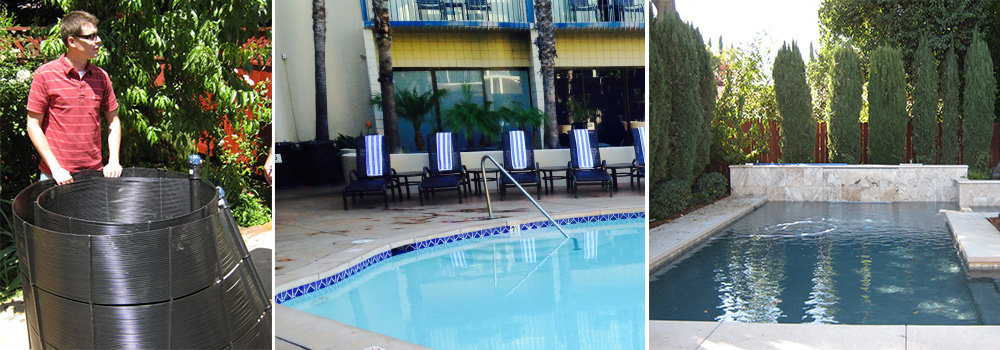
Problem
Air conditioning loads drive peak demand and contribute to overall electric power consumption in California. In the summer, cooling loads are highest in the middle of the day when air conditioners are the least efficient.
Solution
Rejecting waste heat from an air conditioner to a swimming pool rather than to the outside air can significantly reduce electricity demand. At the same time, pool heating costs can be reduced by supplementing or replacing a natural gas pool heater with heat rejected from an air conditioner.
Goal and Results
2018
In this project, funded by San Diego Gas & Electric, WCEC examined the impact of rejecting air conditioner waste heat to a swimming pool and compared the results to a conventional system that rejected heat to the air. Researchers installed a custom rooftop unit (RTU) at a San Diego hotel. This RTU conditioned a small fitness center while rejecting waste heat to the adjacent pool. WCEC documented energy savings and demand reduction.
The climate in San Diego was mild compared to many inland locations, with maximum outdoor air temperatures rarely exceeding 90°F during the 4-week study period. Despite these mild temperatures, the electricity demand reduction was as high as 12% when switching from the conventional heat rejection mode to pool heat rejection mode. The average electricity savings was about 5% and the natural gas savings for pool heating was about 29%.
To increase adoption of technology that rejects waste heat to pools and provide appropriate utility program incentives, modeling the impact of the technology as a function of climate, pool size, air conditioner capacity, and air conditioner load factor is needed. The results from this project could provide an excellent data source to verify model accuracy.

